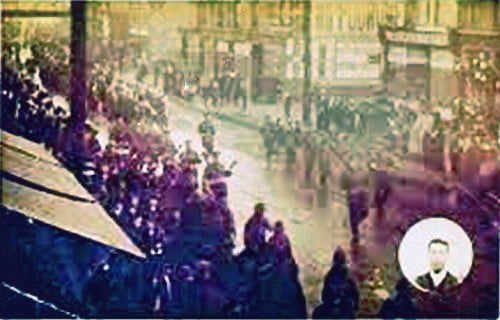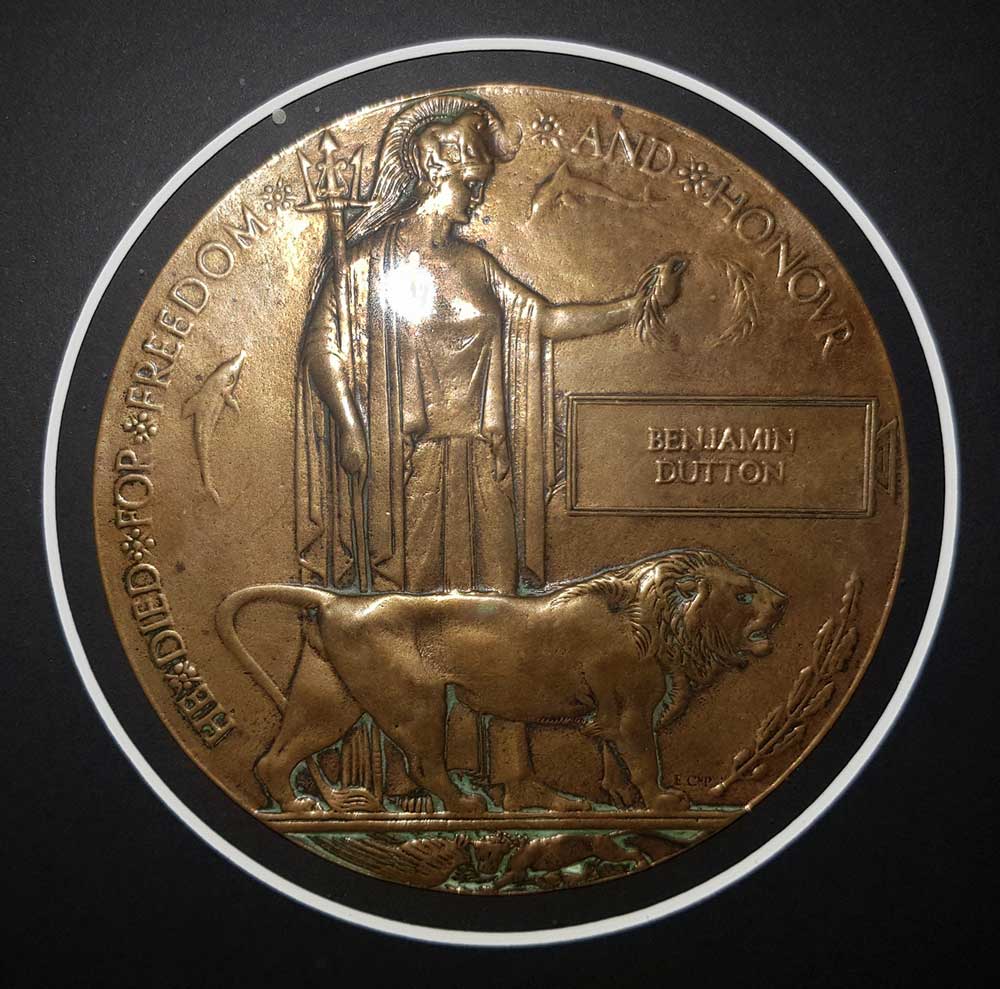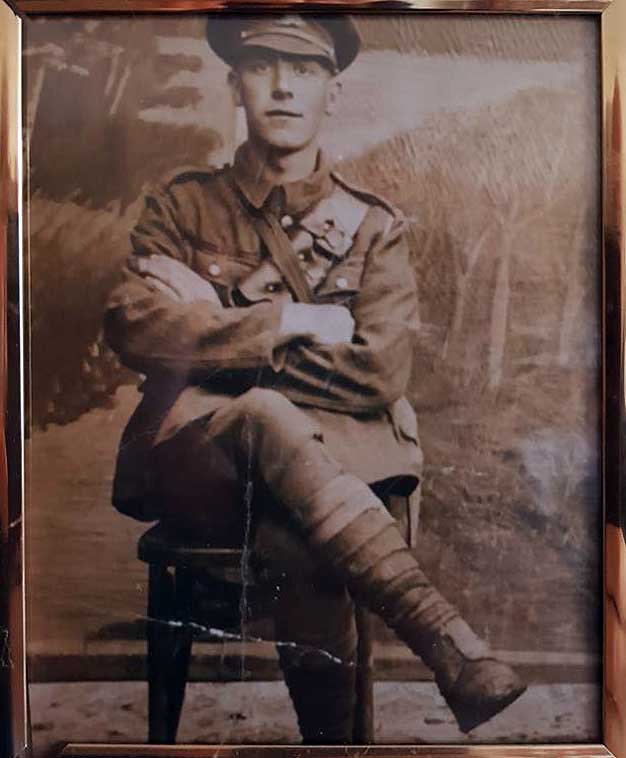Benjamin appears on the 1891 census living with his family at 5 Augustus Street Walsall, Staffordshire. The head of the family was father, also Benjamin Dutton aged 25 a sheet mill foundry worker who had been born in Walsall. His wife was Martha aged 25 from Oldbury in Staffordshire. Daughter Ann was 1 and Benjamin their son was just 7 days old and had already had quite a journey because he had been born in South Wales. There was a 13 year old servant Sarah Corbett.
Ten years later in the 1901 census the family were still in Walsall at 284 Pleck Road. The father Benjamin was 35 and an iron forge worker. This form says he had been born in Darlaston Staffordshire. Martha was 34. The family had grown. Ann was 11, Benjamin 10, Howard 8 and Millicent 6.
By 1911 there had been a big change as the family had moved to Connah’s Quay in Flintshire where they lived at 2 Mold Road. Father, Benjamin, then 46 was still an iron worker but in the works owned by John Summers. His wife of 25 years, Martha was 45 and the family had continue to grow. Ann was 21, Benjamin John was 20, single and an ironworker (born Pontnewydd), Howard was 18 and also an ironworker, Elizabeth was 16, John was 9, Ernest 7, and Frank 3.
There is a card for Benjamin in the Flintshire Roll of Honour at the County Archive Office in Hawarden. The address given was Cedar House, Ash Grove, Shotton, which, incidentally, was the address of Samuel Welch, who is also remembered on this memorial and was related to Benjamin. The regimental details are quoted as above. It says that Benjamin was a Lance Corporal but army records have him as a Private. The card says he served 4 months and that he died from wounds received in France. The card was signed by Benjamin Dutton his father.
Benjamin’s army service records survive and are accessible on www.ancestry.co.uk From them we learn that he signed up at the age of 24, in the very early stages of the war because he was a reservist. His attestation papers were signed on 27th August 1914 and they state that he had previously served in the 5th Royal Welsh Fusiliers. He was described as 5 ft 8 inches tall, 129 lbs in weight with grey eyes, brown hair and a fresh complexion and he was declared fit for service. His period of service was calculated at 125 days. He seems to have been posted to France on 11th November 1914. He was wounded in the head on 11th December 1914 and he died at home from a haemorrhage on the 29th December 1914. The service record includes a list of next of kin and it looks as if his mother had died. The four brothers all still lived at home but sisters Ann and Elizabeth were married and lived locally.
The UK, Army Registers of Soldiers’ Effects, 1901-1929 in which the army calculated the monies owed to deceased soldiers tells us that Benjamin’s father Benjamin Dutton received £3.7s 4d on 1st January 1916. Benjamin’s sister Annie was named as sole Legatee and paid 10s 10d. plus a War Gratuity of £3.0s 0d.
Benjamin was the first soldier to die in Shotton. His funeral was reported in the County Herald on the 8th January 1915 as follows
Connah’s Quay,Shotton. Military Funeral.
On Saturday afternoon last hundreds of people in the Shotton & Connah’s Quay districts participated in paying their last tributes to the memory of the late Mr. Benjamin Dutton, of Ash Grove, Shotton. Some eight or nine weeks ago he volunteered for active service with the 3rd Battalion of the Royal Welsh Fusiliers, and was sent out to the front with the regiment.
Early in December, after having been only in the trenches a short time, he was wounded seriously. He was as soon as possible conveyed to England, and was placed in a Manchester Hospital, where he died last Tuesday week. The remains were brought home, and the funeral took place on the afternoon named. The spectacle was a sorrowful one, and an immense crowd assembled at Ash Grove. There, at the residence, the Rev. J.B. Brookes, pastor of the United Methodist Church, Connah’s Quay, opened the the sad obsequies, after which the cortege moved towards the Methodist Church. It was noticeable that the majority of the soldiers in the district, and who were on leave of absence from their respective regiments, were present according their comrade due respect, and as one who had died in his country’s service. The Union Jack was placed on the coffin, and before the remains marched the firing party, composed of men of the National Reserve serving at the Queensferry “German” Compound; and they carried their arms in the customary reversed order. There was, however, an absence of a band to discourse the “Dead March”; but, as the procession went to the Church, the whole of the main thoroughfare was lined with thousands of people, the cortege alone included 1200 mourners. The Rev, J.B. Brookes also conducted the funeral service at the church where hymns very appropriate to the occasion were sung; and thereafter the rev gentleman concluded by reading the prayers at the graveside in the Cemetery. The firing party discharged the usual volleys over the grave. The Boy Scouts, who were under the charge of Scoutmaster Marriott, took part in the rites, and “kept the route” as well as space round the graveside. The bearer of the coffin were friends of the deceased youth, who some time ago attended the United Methodist Church.
Except taken from the Book “100 Hundred years of Scouting in Connah’s Quay” by Sue Copp.
“Despite these heavy commitments, Marriott seems to have been able to keep the Boy Scouts
running and in the best spirit of Scouting the lads made themselves useful. Indeed, at least one
of them saw military action and sadly, the first military funeral was of former Scout, Ben Dutton,
in January 1915.
Hundreds of people turned out for his funeral procession.
The Chester Chronicle reported the event: – Lance Corporal Ben Dutton from Ash Grove, Shotton had volunteered for active service in the Royal Welsh Fusiliers.
He had been in the trenches for two days when he had suffered serious injuries.He was brought
back to the Manchester Military Hospital where he died on 29 December 1914. At his funeral in
early January there was an immense crowd of 1200 people in the main street. The procession
marched to the United Methodist Church in Connah’s Quay. The firing party was composed of
men serving as guards from the concentration camp at Queensferry. They carried their arms in
customary reverse order. There was the usual volley of shots at Bryn Road cemetery. Connah’s
Quay Boy Scouts, of whom Ben had been a member under the charge of Captain Marriott, formed
a ring and kept the space at the graveside.”
Benjamin is remembered on the Hawarden War Memorial and St. Ethelwold’s Church Screen





